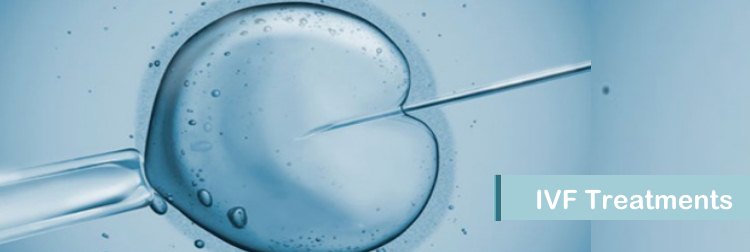
IVF is a major treatment for infertility. In order for pregnancy to occur, an egg has to be released from the ovary and unite with a sperm. Normally this union, called fertilization, occurs within the fallopian tube, which joins the uterus (womb) to the ovary. However over here egg is removed by ovum pick up procedure after monitoring women's ovulatory process and then the union of sperm and egg is carried out in laboratory such fertilization which happens outside the body is called In-Vitro Hence In Vitro Fertilization.
IVF is often recommended if:
- Unexplained infertility.
- Absent/Blocked Fallopian tubes.
- Infections (STD, Endometriosis, Tuberculosis).
- Reduced Sperm count or Motility.
- Failure of Artificial Insemination techniques.
Our individualised approach means that every couple will vary in how their treatment is planned and managed. However, the following information may help to give you an idea of what can be expected.
Procedure
- Controlled Ovarian stimulation with drugs (GNRH Analogues and Gonadotrophins) to produce many eggs.
- Monitoring of follicles and egg development with the aid of vaginal sonography and serial Estradiol hormone estimation.
- Administration of HCG injection, (Human Chorionic Gonadotrophins) when the two leading follicles are 18mm in diameter.
- Oocyte or egg retrieval under short general anesthesia, 35 to 37 hours after HCG injection.
- Identification and isolation of eggs in the laboratory.
- Sperm collection and processing in the lab.
- Fertilization of the egg with the sperm.
- Embryo formation 2 to 5 days after fertilization.
- Embryo transfer of good quality embryos back to the womb, after 2(four cell embryo), 3 (six–eight cell embryo) or 5 (blastocyst stage) days after egg removal.
- Following embryo transfer patient will undergo additional hormone treatment, receiving progesterone until a pregnancy test is performed 14 days after the egg collection.
In Brief:
The Egg Retrieval Process:
The retrieval procedure to obtain the eggs is performed trans-vaginally using a hollow needle guided by the ultrasound image (this is completely comfortable under adequate sedation and local anesthesia). Eggs are gently removed from the ovaries using the needle. This is called "follicular aspiration." Its timing is crucial because the egg will not develop properly if it is collected too early; if too late, the egg also may develop poorly or may have already been released from the ovary and lost.
Lab Work:
The eggs are immediately identified by our embryologists in our special IVF laboratory. They are placed with the sperm in incubators to allow fertilization to take place. The eggs are examined carefully at intervals to ensure that fertilization and cell division have taken place; the fertilized eggs are now called embryos.
Embryo Transfer:
Embryos are usually placed in the wife's uterus 2 or 3 days after egg retrieval. A speculum is inserted into the vagina to expose the neck of the womb (cervix). The embryos are suspended in a tiny drop of fluid and then very gently introduced through a catheter into the womb, often under ultrasound guidance. The transfer is followed by a resting period, blood tests and possibly ultrasound examinations to verify if pregnancy has been established.
Some Complication associate with IVF:
A mild reaction to fertility drugs may involve hot flushes, feeling low of mood or irritable, headaches and restlessness. Ovarian hyper stimulation syndrome (OHSS) is a serious over–reaction to fertility drugs used to stimulate egg production. It can cause symptoms such as a swollen stomach, stomach pains, nausea and vomiting. The risk of miscarriage following IVF is the same as in natural conception. Multiple Pregnancies